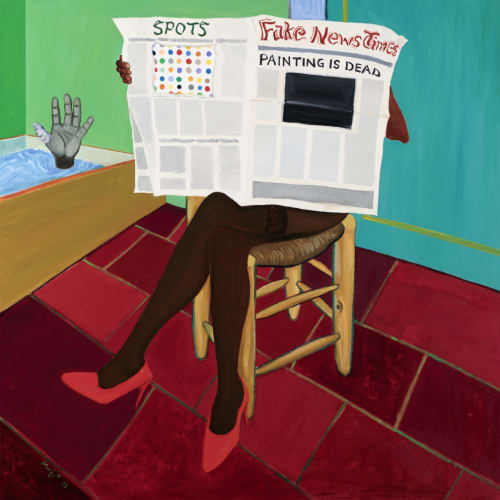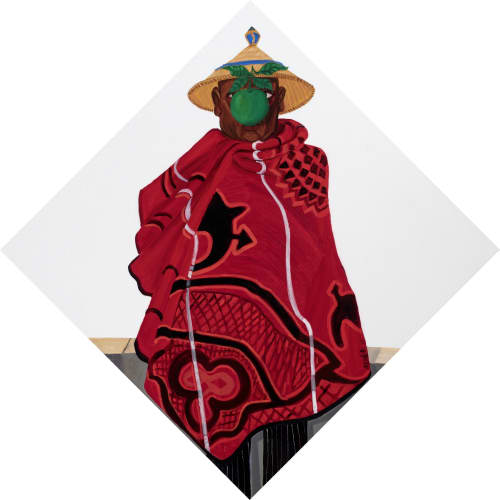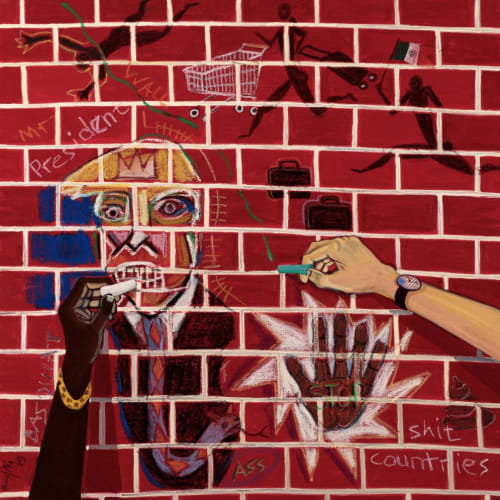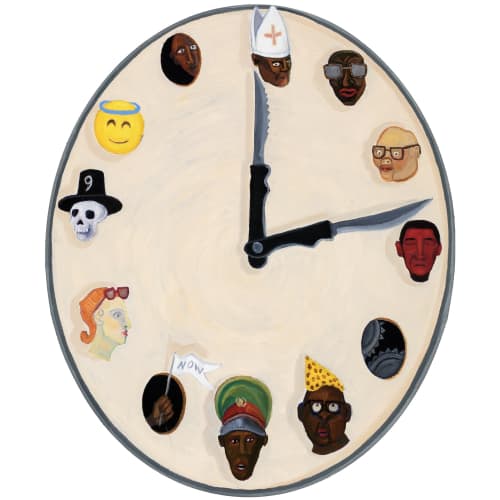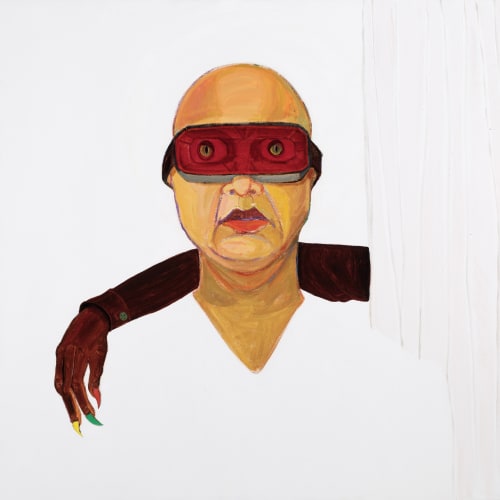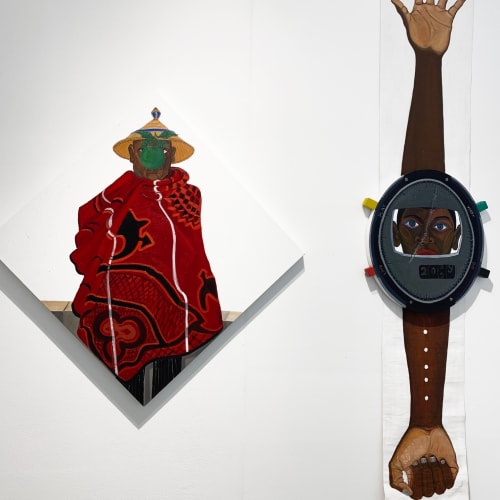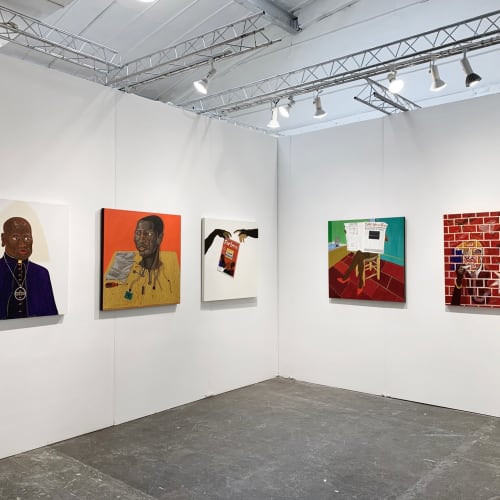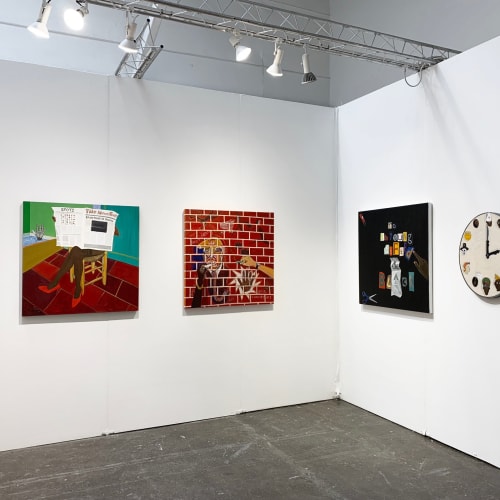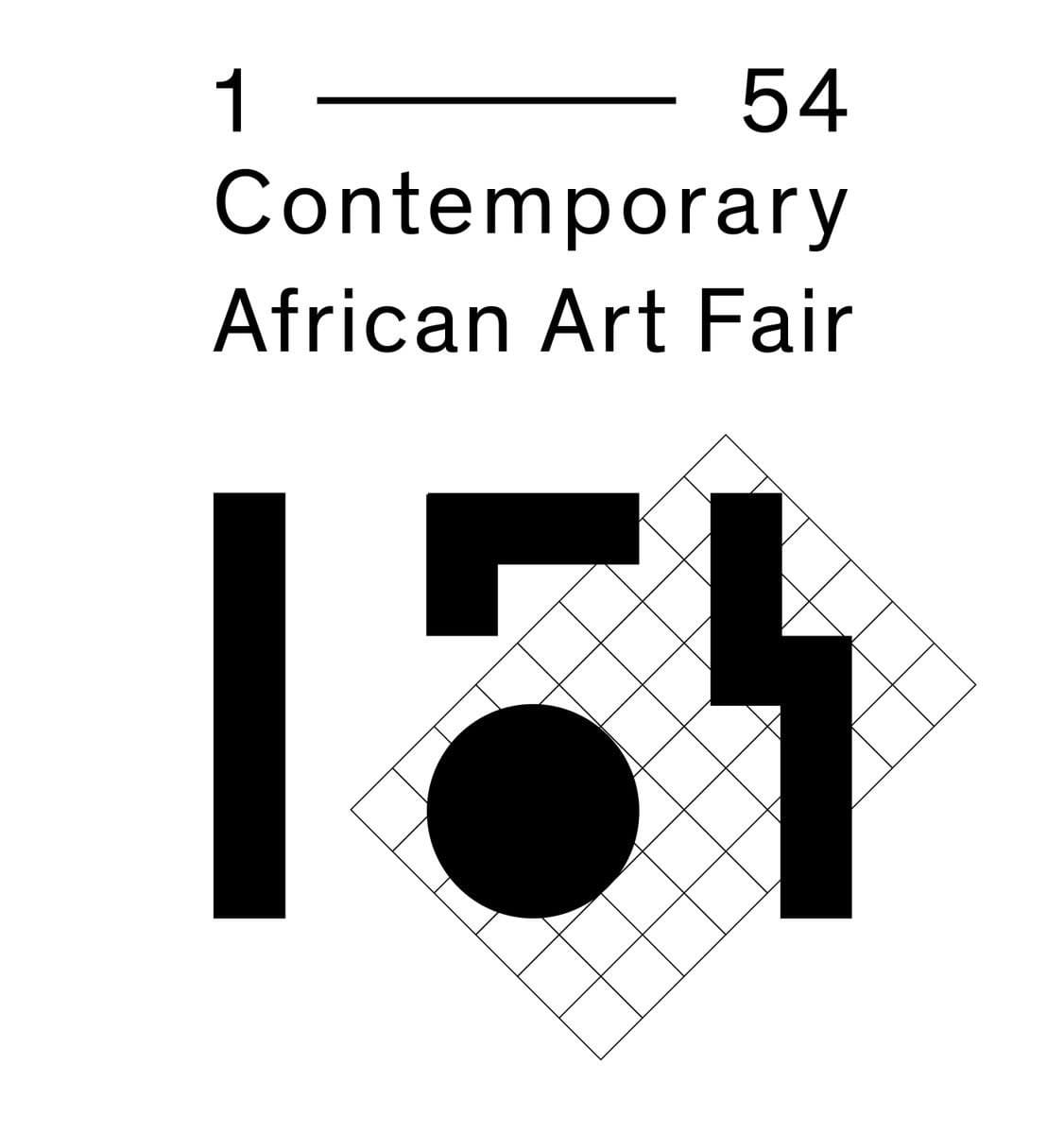The Politics of Painting is a title which reveals a multi-layered and complex negotiation with several notions of ‘politics’ within Richard Mudariki’s practice. It speaks not only to world politics, the events and issues Mudariki’s pictorial inventions respond to, but also a meta-awareness of the politics of meaning and valorisation within the art historical canon. In inquiring into and critiquing this canon, Mudariki also negotiates the personal politics of his own practice, in continually defining his territory as a painter and crystallising his own motivations and intent.
The political issues of the external world which Mudariki addresses in his works range from energy to robotics, religion to bureaucracy, immigration to news media. Within these responses lies a concern for the future tempered by an awareness of how things stay the same, a dark humour which reflects the anxieties of the contemporary human condition. Mudariki considers how the self must strive to define itself – personally, culturally and globally – within a world overwhelmed by information but rapidly losing coherence. This self-definition always occurs on multiple levels within Mudariki’s practice – as an individual, an artist, an observer and a political constituent.
As Mudariki continues to define his own practice he remains hyper aware of his position as an African artist adjacent to the canon of Western art history. By referencing and recycling classic images from art history, Mudariki engages in a complex act of satire, critique and self-reflection. With references ranging from Michelangelo to Magritte, Mudariki appropriates famous images from Western art history and reinvents them. He continues an ever-evolving discussion of how an African artist is to engage, on both a personal and professional level, with a canon that has historically excluded and occluded him. Mudariki is ingenious in the ways he manages to reference art historical images and relocate or invert their potency, forcing an interaction between the canon, contemporary African art, and the realities of a globalised world.
Throughout, Mudariki’s practice maintains a balance, a give and take, between a critical gaze both outward and inward. Mudariki continues exploring the nature of painting, its materiality as well as its theoretical implications. The studio is a laboratory in which Mudariki examines his own practice and the motivations behind it, so that each new body of work not only represents a development in style and concept but also a further layer of complexity in Mudariki’s own understanding of his own practice, and the motivations and challenges inherent within it. An extension into more minimal compositions in The Politics of Painting reflects this desire to discover a core focus and identity. By restricting himself in resources as well as pictorial devices Mudariki zones in on that which is most important to him as a painter and most important to each visual story he wishes to tell. This minimalism speaks to Mudariki’s practice as one of hyper awareness, reflection, criticality; a seriousness of intent which yet does not prohibit playfulness and experimentation with subject matter and media.
